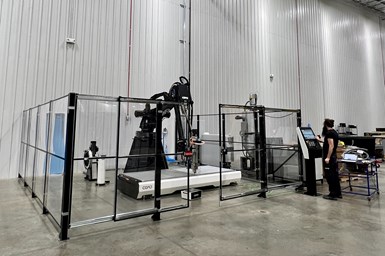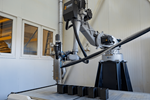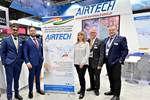Airtech Advanced Materials Group partners with CEAD
The partnership enables Airtech Advanced Materials Group to incorporate CEAD Flexbot systems into its advanced manufacturing portfolio.

CEAD Flexbot located in Airtech’s facility. Photo Credit: Airtech
Airtech Advanced Materials Group (Huntington Beach, Calif., U.S.) has expanded its additive manufacturing (AM) capabilities through a partnership with CEAD (Delft, Netherlands). The company has integrated CEAD’s Flexbot systems into its advanced manufacturing portfolio, signifying an advancement in its technological capabilties.
CEAD’s Flexbot, a robot-based, large-format 3D printing solution, offers a 3 × 1-meter build volume, CNC milling capabilities and Dynamic Flow Control, making it an all-in-one advanced solution for precision manufacturing. The technology resides in Airtech’s Additive Manufacturing Center of Excellence in Springfield, Tenn., U.S. It plays a critical role in developing resins for 3D printing and exploring applications across diverse market segments.
“CEAD’s fully integrated, robotic printing and milling hybrid solution equips Airtech to support its continued growth in the additive manufacturing [AM] market segment, providing unparalleled support for CEAD and Airtech customers worldwide,” says Gregory Hayes, director of additive manufacturing at Airtech.
Additionally, Airtech’s AM experts are set to deepen their knowledge and expertise through daily utilization and planned developmental activities with the CEAD Flexbot. This will further improve their ability to support global customers using Airtech’s Dahltram resins with CEAD Flexbot and Robot Extruder solutions.
Related Content
-
Plant tour: Aernnova Composites, Toledo and Illescas, Spain
RTM and ATL/AFP high-rate production sites feature this composites and engineering leader’s continued push for excellence and innovation for future airframes.
-
Combining multifunctional thermoplastic composites, additive manufacturing for next-gen airframe structures
The DOMMINIO project combines AFP with 3D printed gyroid cores, embedded SHM sensors and smart materials for induction-driven disassembly of parts at end of life.
-
Low-cost, efficient CFRP anisogrid lattice structures
CIRA uses patented parallel winding, dry fiber, silicone tooling and resin infusion to cut labor for lightweight, heavily loaded space applications.


